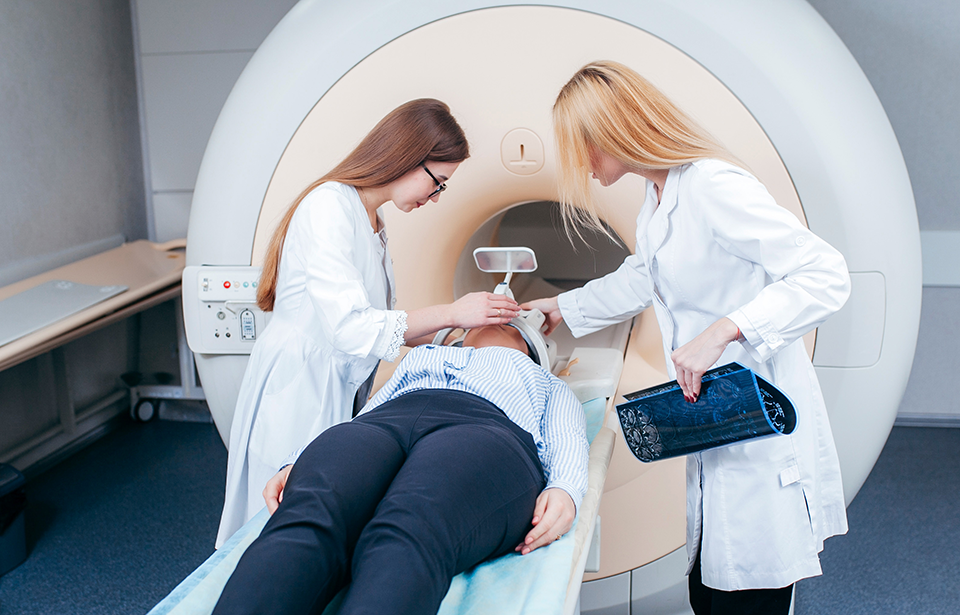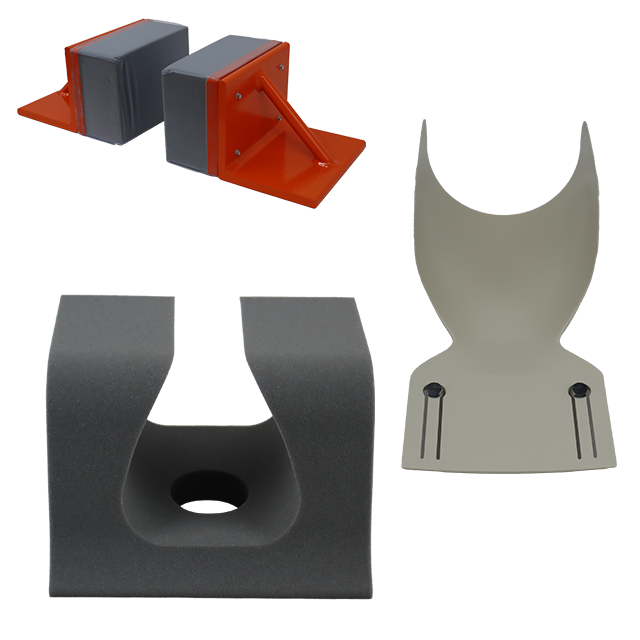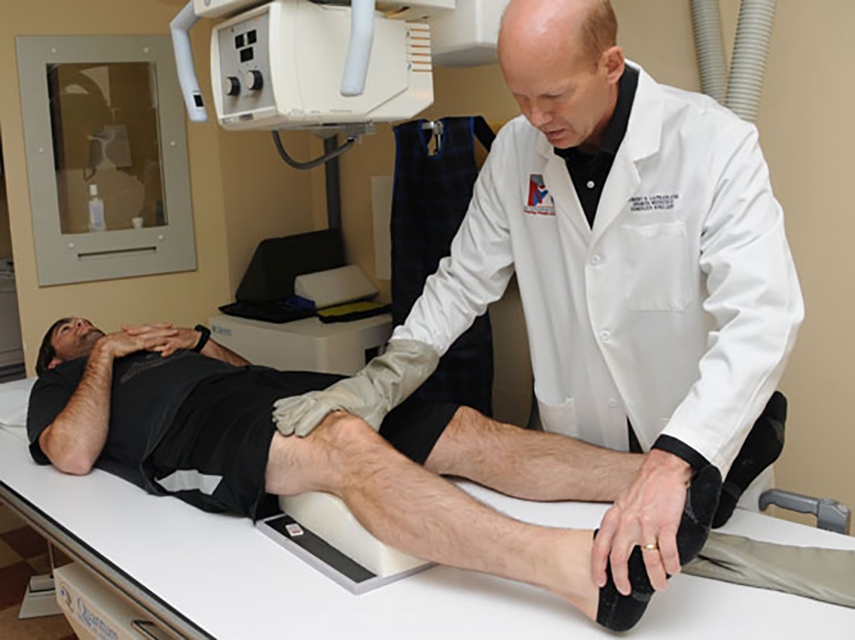Optimizing Imaging Systems for Multiple Procedures, Part 2: Enhanced Patient Experience
This is Part 2 in a 5-part series about optimizing multi-procedure imaging systems. Part 1 offered an overview of the benefits. In Part 2, we’ll...
4 min read
Domico Med-Device July 13, 2023
With advancements in image-guided therapy (IGT) and hybrid operating rooms (ORs), hospitals must stay on the cutting edge to remain competitive and provide the best patient care. Traditional image labs are designed with narrow scopes, accommodating just one procedure or discipline, but hospitals are seeking ways to get more out of their multi-million-dollar investments while driving better outcomes.
There is a new way of thinking, a philosophy of flexibility, where a single imaging lab can accommodate multiple specialties and types of procedures. These multi-procedure imaging suites offer substantial benefits to patients, staff, and hospitals. This five-part series details why more hospitals are optimizing imaging systems for multiple procedures.
Optimizing imaging systems for multiple procedures enhances the patient experience, streamlines the hybrid OR, and increases hospital profitability. Here are seven factors that drive those beneficial outcomes.
 1. Procedure Flexibility
1. Procedure FlexibilityHospitals can conduct more types of procedures in the same space. Rooms and labs are no longer limited to a single discipline, expanding usability and patient access. Instead of needing twelve different rooms for twelve different procedures, hospitals can conduct the same (or more) procedures with just six rooms, for example.
The ability to switch between different types of procedures in a single room not only maximizes the use of space but also ensures that patients receive timely care. For instance, a room used for cardiac catheterization in the morning can be converted for neurology procedures in the afternoon. This flexibility reduces patient wait times and improves the overall efficiency of hospital operations.
Moreover, the capacity to accommodate multiple procedures in one space reduces the need for extensive physical expansions. Hospitals can leverage existing infrastructure to meet growing patient demands, which is both cost-effective and time-efficient.
IGT accessories and attachments allow staff to quickly convert rooms between procedures. For example, the same room could be used for a cardiology procedure and then converted for an interventional radiology procedure between patients.
This rapid conversion capability minimizes downtime between procedures, allowing hospitals to serve more patients in a shorter amount of time. Staff can seamlessly transition from one type of procedure to another, which enhances workflow and reduces the stress associated with managing multiple specialized rooms.
Increased efficiency also means better resource utilization. Hospitals can invest in high-quality imaging systems and accessories, knowing that they will be used to their full potential across various disciplines. This not only improves patient care but also justifies the initial investment in advanced technology.
Care teams can instantly switch between imaging and therapy during procedures, conduct multiple procedures during the same surgery, or even transition from a minimally invasive surgery to an open surgery without leaving the room.
This intraprocedural flexibility is particularly beneficial in complex cases where the patient's condition might change rapidly. For instance, a procedure that starts as a minimally invasive surgery might need to be converted to an open surgery due to unforeseen complications. Having the capability to make this transition seamlessly within the same room improves patient outcomes and safety.
Additionally, the ability to perform multiple procedures in one session reduces the need for multiple hospital visits, which is more convenient for patients and reduces their overall exposure to anesthesia and surgical risks. This holistic approach to patient care ensures that all necessary treatments are provided promptly and efficiently.
 4. Scheduling Flexibility
4. Scheduling FlexibilitySince rooms can accommodate multiple procedures, hospitals can eliminate long waits for dedicated spaces to become available. If interventional radiology is struggling to keep up with cancer biopsies, for example, they can be conducted in the cath lab to meet demand.
This scheduling flexibility ensures that patients receive timely care, which is crucial for conditions requiring prompt diagnosis and treatment. For example, in cases of suspected cancer, reducing wait times for biopsies can significantly impact patient outcomes by allowing for earlier detection and treatment.
Moreover, flexible scheduling allows hospitals to better manage peak times and high-demand periods. By reallocating procedures to different rooms as needed, hospitals can avoid bottlenecks and ensure a smooth flow of operations. This adaptability is essential for maintaining high levels of patient satisfaction and operational efficiency.
Multi-discipline imaging suites are outfitted with versatile positioning aids that keep patients comfortable and safe during various procedures. Radiolucent patient interface devices allow caregivers to obtain high-quality images at reduced radiation levels. Bariatric table extenders accommodate larger patients, and padded wedges and rolls prevent pressure injuries.
Enhanced patient comfort and safety are critical for maintaining high standards of care. Positioning aids, such as arm boards and non-slip pads, ensure that patients are securely and comfortably positioned during procedures. This not only prevents injuries but also reduces anxiety, leading to a better overall patient experience.
Radiolucent devices are particularly beneficial as they do not interfere with imaging, allowing for clearer and more accurate images. This precision in imaging leads to better diagnosis and treatment planning, ultimately improving patient outcomes.
 6. Community Health
6. Community HealthWith multi-procedure capabilities, hospitals can use more available space and reduce wait times for diagnosis and treatment. In some cases, caregivers can image, diagnose, and treat patients on the same day. Ultimately, optimizing imaging systems for multiple procedures enables hospitals to treat more patients in less time, contributing to overall community health.
For example, in underserved areas where healthcare resources are limited, the ability to perform multiple procedures in a single visit can make a significant difference. Patients who might otherwise face long wait times or multiple trips to the hospital can receive comprehensive care in one appointment. This efficiency helps to address healthcare disparities and ensures that more community members have access to timely and effective medical services.
Improving community health through optimized imaging systems also enhances a hospital's reputation. When a hospital is known for its efficiency and high-quality care, it attracts more patients, including those who might travel from neighboring areas for better services.
Since rooms are fully utilized and rarely sit idle, hospitals can get more out of their fixed costs. They can also combine service lines and pool funds to expand their capabilities, serve more patients faster, and increase revenue.
Maximizing return on investment (ROI) is a critical consideration for hospital administrators. Multi-procedure imaging systems allow hospitals to make the most of their capital investments by ensuring that expensive equipment is used to its full potential. This not only justifies the initial expenditure but also provides financial flexibility to invest in other areas of patient care and hospital operations.
By combining service lines, hospitals can reduce redundant purchases and streamline their supply chains. Shared resources, such as imaging equipment and accessories, can be used across different departments, leading to significant cost savings. Additionally, the ability to serve more patients in less time translates to increased revenue, which supports the hospital's financial health and sustainability.
Optimizing imaging systems for multiple procedures offers substantial benefits for patients, staff, and hospitals. These systems provide procedure flexibility, increased efficiency, intraprocedural flexibility, scheduling flexibility, enhanced patient comfort and safety, improved community health, and maximize ROI. By adopting a flexible and holistic approach to imaging, hospitals can stay competitive, provide better patient care, and ensure long-term operational success.
Discover how optimizing imaging systems for multiple procedures enhances the patient experience in Part 2 of this series.

This is Part 2 in a 5-part series about optimizing multi-procedure imaging systems. Part 1 offered an overview of the benefits. In Part 2, we’ll...

In today’s fast-paced medical environment, ensuring patient safety during diagnostic imaging and surgical procedures is of utmost importance. One of...

This is the final installment in a 3-part series on patient positioning factors that improve imaging and therapy success. Part 1discussed how...